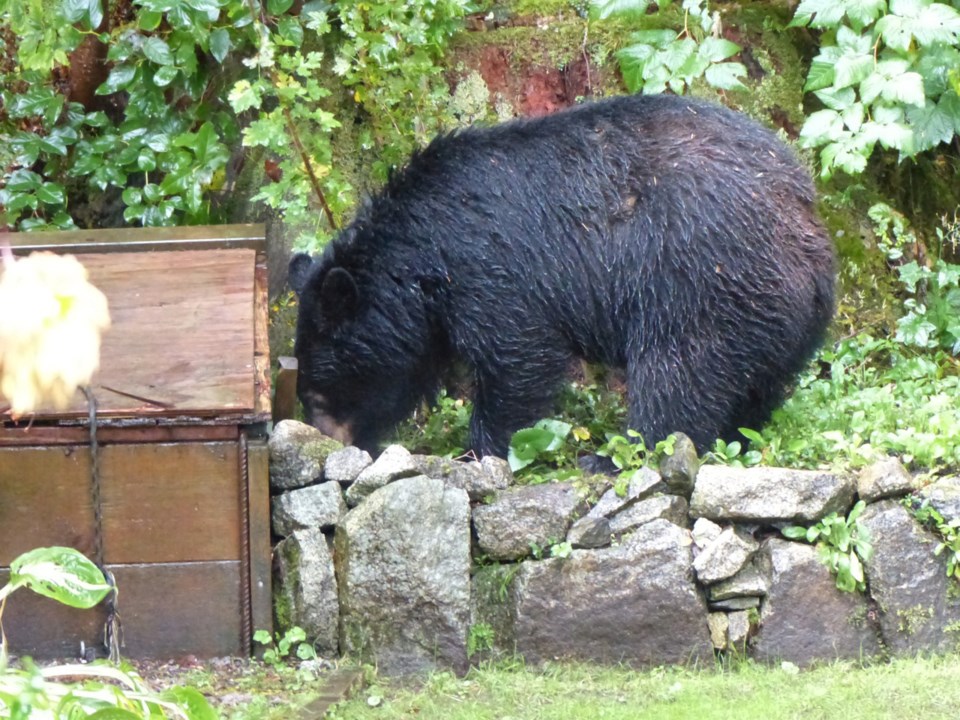It was a banner year for black bear sightings in the Sea to Sky Corridor and, unfortunately, for bear and human conflicts, a new WildSafeBC report shows.
The Conservation Officer Service fielded 722 calls regarding black bears in Squamish between April and November, Vanessa Isnardy, community coordinator with WildSafeBC, told the District of Squamish committee of the whole on Tuesday.
That is almost double the calls fielded in 2015.
Squamish had the fourth most calls to officers in the province, she added.
Bears in garbage were responsible for 32 per cent of calls while the draw of fruit trees was the reason for 10 per cent of the calls, the year-end report states.
The misconception that “fruit trees are a natural food source” may have meant fewer people called officers when bears visited their trees, according to Isnardy.
“People are more likely to take out their phone and take a photo than call,” she said, adding public perception needs to change.
Domestic fruit from trees is not a food source black bears would normally access and they bring the bears close to our homes, she said.
Isnardy estimates there are about 1,500 fruit trees in the district and there were about 20 active bears in Squamish this year. Once a bear learns where the trees are, it teaches its offspring, according to Isnardy.
In September, five bears made daily trips between the downtown schools, the skateboard park, Rose Park and the Dentville neighbourhood attracted by nut and fruit trees, according to Isnardy.
The current bylaw that covers bear attractants in the district says fruit from trees should be picked up before it has been on the ground for three days, but Isnardy said that is hard to enforce. Once the fruit is on the ground, Isnardy added, it is often too late to deter bears.
They climb the trees and eat the fruit as soon as it is ripe.
Human and bear interactions result in more bears being killed, the report asserts.
Over the past year, 11 black bears were killed – nine were destroyed by conservation officers, one by a member of the public and one by RCMP, Isnardy said.
“The Garibaldi Estates area had high degrees of bear-human conflict with three people being attacked and receiving minor injuries,” the report states.
One of the killed bears had killed all the hens in four different chicken coops in the Garibaldi Estates area, according to the report. None of the coops had working electronic fencing, Isnardy said.
In October, about 340 compost totes and 60 garbage totes were damaged by bears compared to 140 garbage and 60 compost totes in October of 2015. Council passed resolutions to revise the Wildlife Attractant Bylaw to clarify rules around fruit trees and directed staff to update the district’s 2006 Bear-People Conflict Prevention Plan. Council also supported the drafting of a vegetation management plan for attractants on district property.



